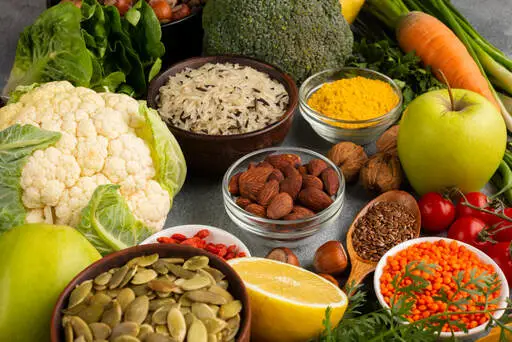Welcome to our journey, From Farm to Fork: Tracing Our Food’s Origins”. Here, we’ll uncover how our favorite foods go from farms to our plates. Food isn’t just something we eat; it’s a story of where it comes from and how it gets to us. Join us as we explore this fascinating journey together
Let’s follow our food’s journey from the farm to our forks. It all starts with farmers growing ingredients, then moves through processing, transportation, and onto our tables. Along the way, we’ll learn about the challenges and innovations in food production that shape what we eat every day.
Understanding where our food comes from is crucial. It helps us make choices that support sustainable practices and healthier communities. By knowing the origins of our food, we honor the hard work of farmers and connect more deeply with what we eat. Join us as we discover why tracing food origins matters.
1. The Farming Stage
At the farming stage, food begins its journey from the ground up. Farmers cultivate essential ingredients, from grains to vegetables and livestock, laying the groundwork for our meals.
a. Cultivating Ingredients: A Look at Agricultural Practices
Agricultural practices are the backbone of food cultivation. Farmers employ methods like planting, watering, and pest management to grow crops and raise livestock, ensuring a steady supply of ingredients for our meals.
b. Sustainable Farming Methods and Their Impact
Sustainable farming methods are revolutionizing food production. Techniques like crop rotation and organic farming minimize environmental impact, preserving resources for future generations while meeting our food needs.
c. Farm-to-Table Movement: Bridging the Gap Between Farmers and Consumers
The farm-to-table movement connects farmers directly with consumers, promoting transparency and supporting local agriculture. Farmers markets and farm-to-table restaurants offer fresh, locally sourced food, strengthening communities and fostering a deeper connection to our food sources.
2. The Production Process
In the production process, raw ingredients are transformed into the foods we enjoy. This involves steps like harvesting, processing, packaging, and distribution, ensuring that food reaches us fresh and ready to eat.
a. Harvesting and Processing: Transforming Raw Ingredients
Harvesting and processing turn raw ingredients into edible products. Whether it’s fruits and vegetables picked at peak ripeness or grains milled into flour, these processes preserve food’s quality and extend its shelf life.
b. Food Supply Chains: Navigating Distribution Channels
Food supply chains connect producers to consumers, ensuring food reaches us efficiently. From local markets to global networks, these chains deliver a variety of foods to meet our dietary needs and preferences.
c. Innovations in Food Production: From Traditional to Modern Techniques
Innovations in food production have improved efficiency and sustainability. Traditional methods and modern technologies like genetic engineering and precision agriculture help meet food demands while minimizing environmental impact.
3. Global Flavors and Cultural Influences
Food reflects diverse cultures worldwide, from the bold spices of India to the comforting pasta of Italy. Each cuisine tells a story of local ingredients, traditions, and historical influences, enriching our culinary experiences with global flavors.
a. Exploring Diverse Culinary Traditions
Delve into diverse culinary traditions worldwide, from the savory spices of the Middle East to the colorful street foods of Mexico. Each tradition offers a unique taste of culture, fostering appreciation and understanding across borders.
b. Cultural Significance of Food: Rituals and Celebrations
Food plays a central role in cultural rituals and celebrations, uniting communities and honoring traditions. Whether it’s a feast for Chinese New Year or a Thanksgiving meal, food brings people together, creating cherished memories and reinforcing cultural identity.
c. Fusion Cuisine: Blending Flavors from Around the World
Fusion cuisine combines flavors from different cultures, creating exciting new dishes like sushi burritos and kimchi tacos. Celebrating diversity and innovation, fusion cuisine showcases the universal language of food, transcending cultural boundaries with delicious results.
4. Nutritional Insights and Health Impacts
Understanding the nutritional value of food is key to staying healthy. By choosing nutrient-rich options, we support our well-being and reduce the risk of diseases.
a. Nutrient Content of Farm-Fresh Foods
Farm-fresh foods are packed with essential nutrients, like vitamins and antioxidants, that keep us healthy. Opting for fresh produce means we get the most out of our food, nourishing our bodies with what they need.

b. Health Benefits of Locally Sourced and Seasonal Produce
Eating locally sourced and seasonal produce offers many perks. It’s fresher, tastier, and supports our local farmers. Plus, it’s better for the environment and helps build stronger communities.
c. Addressing Food Security and Access to Nutritious Options
Ensuring everyone has access to healthy food is crucial. By supporting programs like farmers markets and food assistance, we can make sure everyone has the chance to eat well and stay healthy.
5. Environmental Considerations
Considering the environment in our food choices is crucial for a sustainable future. Understanding the impact of food production on the planet and advocating for eco-friendly practices helps minimize our carbon footprint and preserve natural resources.
a. Impact of Food Production on the Environment
Food production contributes to environmental issues like deforestation and greenhouse gas emissions. Recognizing these impacts allows us to make informed choices that reduce our ecological footprint and support practices promoting environmental sustainability.
b. Sustainable Practices: Reducing Food Waste and Carbon Footprints
Simple actions like meal planning and composting can help reduce food waste and minimize carbon footprints. Supporting companies and farmers prioritizing sustainability encourages positive change in the food industry.
c. Advocating for Ethical and Eco-Friendly Food Choices
Promoting ethical and eco-friendly food choices supports practices like organic farming and fair trade. These actions protect ecosystems, conserve biodiversity, and foster social justice within the food system. Through collective advocacy, we can drive positive change toward a more sustainable food future.
6. Food Education and Awareness
Food education and awareness are crucial for making informed choices about what we eat. Understanding labels and ingredients helps us choose healthier options that align with our needs and values.
a. Promoting Food Literacy: Understanding Labels and Ingredients
Promoting food literacy means helping people understand food labels and ingredients. This knowledge allows us to make healthier choices and avoid ingredients that may not be good for us.
b. Educational Initiatives: Teaching the Next Generation About Food Origins
Educational initiatives teach kids about where food comes from. By learning about agriculture and culinary traditions, they gain a deeper appreciation for food and its importance in our lives.
c. Consumer Empowerment: Making Informed Decisions About Food Purchases
Empowering consumers means giving them the information they need to make smart food choices. With access to accurate information, we can support ethical and sustainable food practices, leading to healthier communities and a healthier planet.
7. Conclusion
Understanding food origins is key to making better choices for our health and the planet. Let’s keep supporting sustainable practices and embracing diverse culinary traditions for a healthier future.
a .Reflecting on the Journey: Insights and Takeaways
Our journey through food origins has taught us valuable lessons about sustainability and cultural appreciation. Let’s use these insights to make more informed decisions about the food we eat. For a deeper understanding of how our food choices impact the planet, explore our companion post: ‘Sustainable Eating: How Your Food Choices Impact the Planet.’
b. Encouraging Continued Exploration of Food Origins
Let’s stay curious and keep exploring the stories behind our meals. By learning more about food origins, we can deepen our connection to what we eat and make choices that benefit both ourselves and the environment.



















































